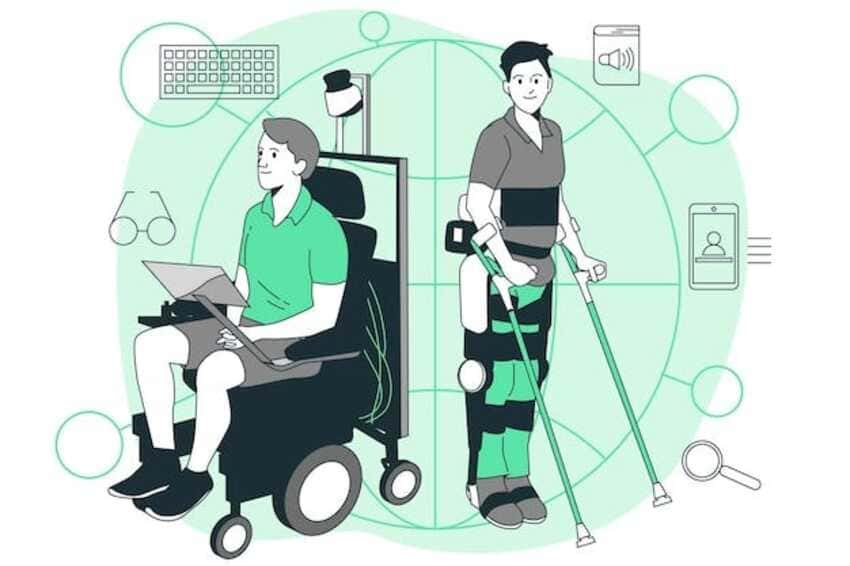
Breaking Barriers: AI-Driven Financial Accessibility for the Blind and Mobility-Impaired
Title
Breaking Barriers: AI-Driven Financial Accessibility for the Blind and Mobility-Impaired
Author
1. Denis Brunetti, Postdoctoral Researcher, Souphanouvong University, Laos
Abstract
Financial
accessibility is a fundamental prerequisite for social inclusion, independence,
and economic participation. Yet, millions of individuals with
disabilities—particularly those who are blind or have limited mobility—face
significant challenges in accessing everyday banking services. Automated Teller
Machines (ATMs), despite being critical touchpoints for financial independence,
continue to present usability barriers rooted in their reliance on vision, fine
motor skills, and inaccessible interface designs.
The
rapid advancement of artificial intelligence (AI), especially in the form of
agentic, multimodal systems, offers transformative opportunities to dismantle
these barriers. By combining speech technologies, computer vision, natural
language understanding, haptic feedback, and secure edge-cloud hybrid
architectures, AI systems can reimagine ATMs and public kiosks as universally
accessible.
This paper provides a comprehensive exploration of how AI-driven solutions can enable financial accessibility for blind and mobility-impaired populations. It reviews the current state of accessibility in banking, highlights technological breakthroughs in AI for assistive interaction, presents a synthesized framework for agentic AI-powered inclusive ATMs, and analyzes both the benefits and challenges of such approaches. The discussion further explores deployment strategies, ethical considerations, and a roadmap toward nationwide, inclusive financial ecosystems. The findings suggest that with careful design, AI has the potential to transform financial infrastructure into a universally accessible system, thus breaking persistent social and technological barriers.
Keywords
Conclusion
Financial inclusion cannot be achieved without addressing the persistent accessibility barriers faced by blind and mobility-impaired individuals. ATMs and kiosks, as central nodes of financial infrastructure, must evolve from exclusionary designs to universally accessible systems.
Artificial intelligence—especially in its agentic, multimodal form—provides a unique opportunity to achieve this transformation. By integrating speech, vision, haptics, personalization, and secure architectures, AI-powered systems can enable independent, dignified, and secure financial interactions.
The transition requires careful attention to challenges of security, bias, regulation, and user trust. However, with collaborative efforts between banks, technology developers, policymakers, and disability advocacy groups, AI-driven accessibility can become the new standard.
Breaking barriers in financial accessibility is not only a technological imperative but also a moral and societal responsibility. With the right vision and commitment, agentic AI can redefine inclusive banking for the twenty-first century and beyond.
Author Contrubution
The author was solely responsible for the study's conception, data collection, analysis, interpretation, and manuscript preparation.
Funding
The authors did not receive financial support from any public, commercial, or non-profit funding agencies for this research.
Conflict of Interest
All authors state that there are no conflicts of interest.
Data Sharing Statement
Not applicable.
Software And Tools Use
Not applicable.
Acknowledgements
I am thankful for the help and expertise of all contributors to this study and manuscript, as well as the insightful feedback from anonymous reviewers.
Corresponding Author
Denis Brunetti
Souphanouvong University, Postdoctoral Researcher, Laos
Copyright
Copyright: ©2025 Corresponding Author. This is an open access article distributed under the terms of the Creative Commons Attribution License , which permits unrestricted use, distribution, and reproduction in any medium, provided the original author and source are credited.
Brunetti, Denis. “Breaking Barriers: AI-Driven Financial Accessibility for the Blind and Mobility-Impaired.” Scientific Research Journal of Business, Management and Accounting, vol. 3, no. 1, 2025, pp. 70-79, https://isrdo.org/journal/SRJBMA/currentissue/breaking-barriers-ai-driven-financial-accessibility-for-the-blind-and-mobility-impaired
Brunetti, D. (2025). Breaking Barriers: AI-Driven Financial Accessibility for the Blind and Mobility-Impaired. Scientific Research Journal of Business, Management and Accounting, 3(1), 70-79. https://isrdo.org/journal/SRJBMA/currentissue/breaking-barriers-ai-driven-financial-accessibility-for-the-blind-and-mobility-impaired
Brunetti Denis, Breaking Barriers: AI-Driven Financial Accessibility for the Blind and Mobility-Impaired, Scientific Research Journal of Business, Management and Accounting 3, no. 1(2025): 70-79, https://isrdo.org/journal/SRJBMA/currentissue/breaking-barriers-ai-driven-financial-accessibility-for-the-blind-and-mobility-impaired
3388
Total words1466
Unique Words180
Sentence18.3
Avg Sentence Length0.31205313051146
Subjectivity0.036445546737213
PolarityText Statistics
Viewed / Downloads
Total article views: 66 (including HTML, PDF, and XML)| HTML | XML | Total | |
|---|---|---|---|
| 40 | 19 | 7 | 66 |
Viewed (geographical distribution)
Thereof 63 with geography defined and 3 with unknown origin.